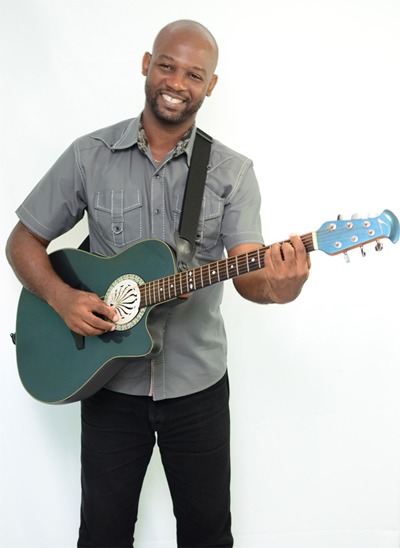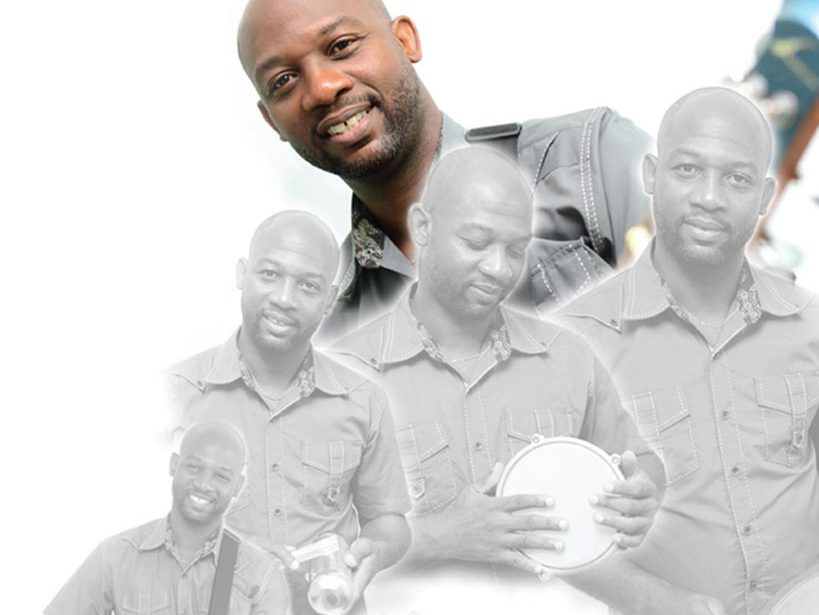The buzz in your brain, the humming in your veins, the swell of your heart as your favourite song comes on…
We all know that music can have a physiological effect on our bodies.
But did you know that music can also be used to help the recovery of stroke patients, aid in drug and substance abuse rehabilitation, and improve cognitive function in Alzheimer’s patients?
As Trinidadian music therapist Kirk Niles explains, music therapy is an allied health care profession that essentially uses music or the elements of music to accomplish non-musical treatment goals.
“The goal is not necessarily to work towards a performance,” he explains. “Similar to how an occupational therapist or speech therapist may work, the goal is to help the patient recover or learn how to adapt to their physical situation after an accident, stroke or other impaired functioning.”
The musical connection

Music therapy was a dream of Kirk’s — although he didn’t know it until he found it.
Ever since I knew myself, music has been part of my life“Ever since I knew myself, music has been part of my life,” he says. “I grew up loving Jackson 5 and James Taylor, I loved to sing and play guitar… but I wasn’t interested in showbiz.”
He began researching the field of music education, and found Berklee College in Boston, United States. He communicated back and forth with the college for a few years, and then one year they sent their updated prospectus, offering a new programme: Music Therapy.
“I was like — ‘this is IT!’ ” he exclaims. “I knew performing wasn’t it, and music education was also not exactly what I wanted. But when I saw the therapy course offered, that bulb went off — the immediate connection was there. From that point on, it was haunting me.”
Not having the funds to pursue it at the time, he pursued a Musical Arts degree at the University of the West Indies, and was later able to secure a scholarship to attend another U.S. university, the University of Kansas, that offered a Masters in Music Therapy, which he is now on the tail end of completing.
The field of Music Therapy
Music therapy is still a relatively new field, and one that many people may not know much about.
“There is a general misconception that music therapists are musicians that couldn’t make the cut to be a performer — ‘those who can’t do, teach’,” Kirk says. “But that’s far from the truth. You must have years of formal training on your principal instrument just to meet the basic entry requirements for most programmes.”
His programme was quite intensive, including courses on music history, human physiology, and music therapy for different populations. Like many other degrees, there is a practicum or internship required as well, in his case a 6-month internship under the tutelage of a CMBT Board-certified Music Therapist.
In the United States, the credential of Music Therapist – Board Certified (MT-BC) is granted by the Certification Board for Music Therapists (CBMT), and the applicant must effectively demonstrate the knowledge, skills and abilities to practice music therapy in line with the established guidelines of the profession.
You have to be a solid musician as well as a therapist“Music therapy is definitely not just a matter of anyone just picking up a guitar,” Kirk says. “You have to be a solid musician as well as a therapist.”
In practice, music therapy involves various genres of music, and students are exposed to the broad range of the musical spectrum.
“Music therapy is also not just about calming classical or jazz music,” he adds. “What is calming for one person, might drive another crazy. Music can also be ‘stamped’ in your senses… for example, if a calming song was playing while a child was being abused, the song or genre may always bear negative associations.”
The range of music will of course depend on the age of the client, the client’s own preferences, and the goal that the therapy is addressing. Elements of music that can be used include instrumental improvisation, lyrical analysis, songwriting, dance or movement, playing an instrument to rehabilitate motor skills after a stroke or accident, singalongs and listening practices, and much more.
Music Therapy in Trinidad & Tobago
The field of music therapy is still a fledgling one in T&T, but one Kirk is hoping will grow and develop with time. He is aware of only four music therapists currently practicing in the country, including himself.
It was a foot in the door, and one I was grateful forHaving previously volunteered to teach guitar at the School for the Blind and at the Autistic Society, when Kirk returned to Trinidad after attaining his Bachelor’s degree, he was able to make connections within the small community of special needs institutions.
“It was a foot in the door, and one I was grateful for, as hardly anywhere — particularly in Trinidad — will ever advertise a vacancy for a music therapist,” he explains.
“Most music therapists have to go in and sell themselves, and create a job. The professor of one of my colleagues took 10 years to get to the job she has now — many people won’t have that kind of patience. But I think regardless of how many music therapists there are in the country, there will always be a role for everyone, as although we all undergo the same training for the general population, in practice everyone will have their different interests.”
Out of his fellow colleagues practicing locally, one is passionate about working with prisons and at-risk youth, while another works alongside an art therapist with psychiatric patients at St. Ann’s Hospital.
My true love is the elderly or hospice“While I’ve enjoyed and appreciated my experience with those with special needs, I also want to broaden my capacity and explore other avenues as well,” Kirk says. “My true love is the elderly or hospice. I think music can bring so much enrichment to their situations.”
He gives the example of an Alzheimer’s patient, who may be experiencing loss of memory ‘from the outside in’, so that recent memories are gone — yet, playing a song that was popular in that person’s twenties can cause the brain to respond involuntarily, in ways that typical therapeutic forms cannot achieve.
Music Therapy in the Corporate World
Another avenue Kirk has some experience in, and is hoping to pursue further, is the use of music therapy in the corporate world.
Personally, in Trinidad and Tobago he has used music therapy as an accompaniment to change management, team-building and employee enhancement exercises. But the global scope of corporate integration is much more expansive.
“In the United States, there is a huge movement with Drum Circles,” he explains. “Toyota’s corporate office in California has a drum room to manage stress and for employee engagement among their teams.”
Drum Circles can be used to promote creativityDrum Circles can be used to promote creativity as well as to tackle traditional challenges such as barriers to teamwork, interpersonal connecting, or effective leadership. For example, the music therapist facilitator can allow the participants to take turns leading the drumming, or teammates will listen intently to repeat a particular sequence.
“Through the music environment, some of that knowledge can be transferred to the workplace,” Kirk explains.
Another corporate avenue of integration that he has researched is Fit Rhythms, a programme developed for all ages and abilities, where the trained facilitator leads participants through exercise movements using handheld percussion instruments alongside pre-recorded music.
“There is no set choreography, and everyone from a toddler to a grandparent can participate without embarrassment and just to have fun,” Kirk says. “It is really something I would like to do, something I want to formally pursue training for, and work with local companies.”
He is also hoping to influence the development of a music therapy programme at a tertiary educational institution.
Music can be integrated in almost everything“The music therapists we do have, they have all studied in the U.S. or U.K., and I think it is something that T&T needs to explore. We are a musical people, and there is so much positivity that can come out of music,” he says.
“Music can be integrated in almost everything. It is a learning device — from childhood we learn our ABCs to a tune. It can be the positive force keeping young persons from nefarious activities. Music can bridge cultural barriers and lead to wider acceptance. And all music has its place and a variety of purposes. I look at music as food — you don’t have to love it all, but you should try all kinds of music, and be open to all that music can offer.”

